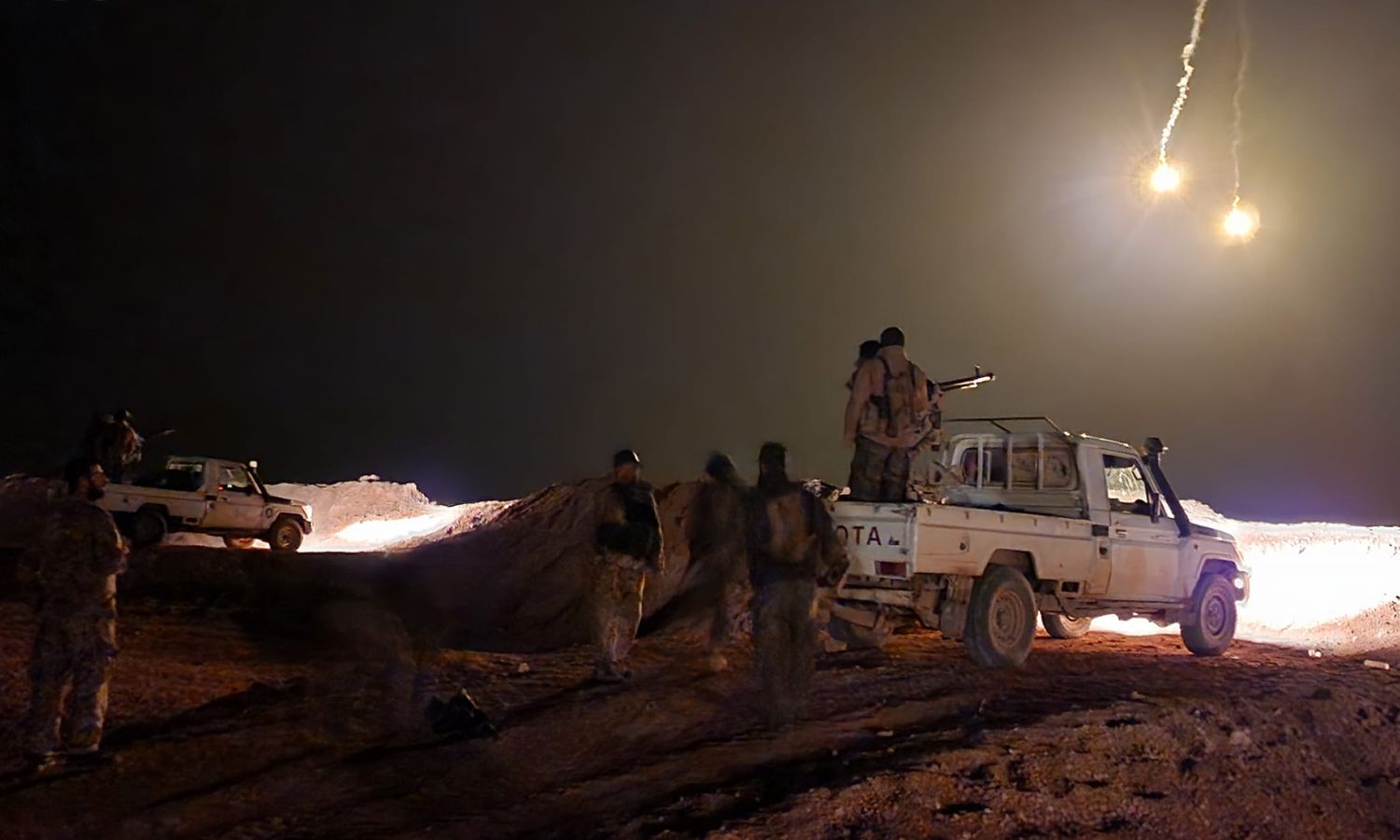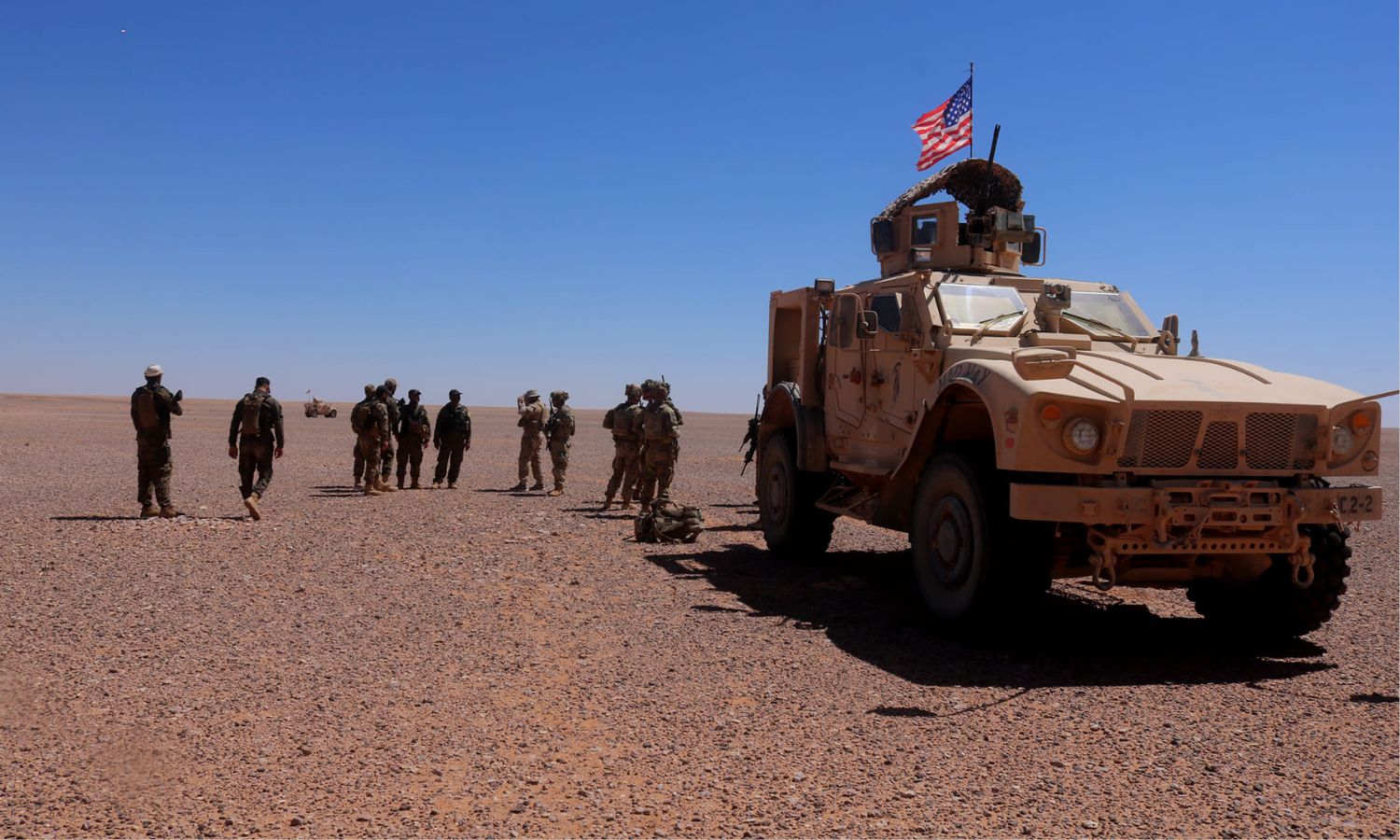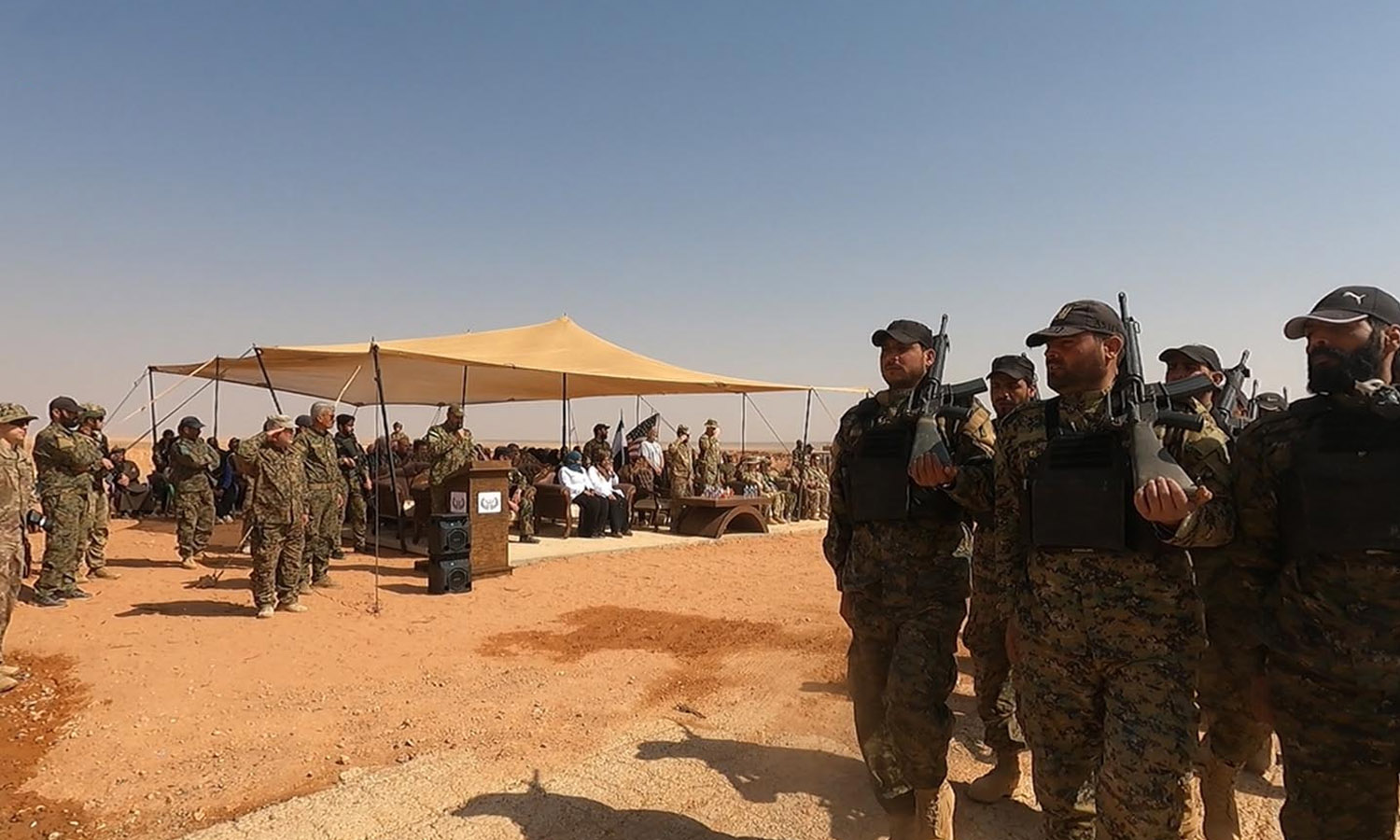



Enab Baladi – Khaled al-Jeratli
Midway through the borderline between Syria and its neighbors Jordan and Iraq, which spans over 416 kilometers, the United States established years ago what is known today as the “55 Kilometer area” or “al-Tanf garrison,” or “al-Tanf base.”
The term “al-Tanf,” which is always mentioned when referring to this military base, goes back to the village of al-Tanf, which lies to the east of Homs on the same border crossing, where the base itself is located. Along a 55-kilometer expanse, local forces supported by Washington are spread near the base’s center.
A few kilometers south of the base lies the al-Rukban camp, home to thousands of displaced Syrians and those relocated from Jordan, suffering poor living conditions in a desert geographical area not initially meant for human habitation before the Syrian displacement.
The name of al-Tanf base has been repeatedly mentioned since Sunday, January 28, after it was targeted by drone attacks that resulted in the death of three American soldiers. A group calling itself “Islamic Resistance in Iraq,” a conglomerate of Shiite factions supported by Iran across Syria, Iraq, Yemen, and Lebanon, claimed responsibility for the attack.
While the United States vows retaliation at the time and place of its choosing, Iran denies any responsibility for the attack, considering that an ongoing “conflict” between the United States and “resistance” factions is based on the 100-day ongoing war in Gaza, with which it claims no involvement.
The 55-kilometer area includes local factions supported by Washington, the most prominent of which was formerly known as the “Revolutionary Commando Army” (today’s Free Syrian Army), and alongside it in the same area, remnants of two other local factions that had previously collapsed, “Martyr Ahmad al-Abdo Forces,” and “Lions of the East Army.”
The Saudi newspaper Asharq Al-Awsat reported on local sources in the area, not named, that a delegation from the International Coalition Forces visited the al-Rukban camp, neighboring the al-Tanf base, on January 24. It indicated that the Coalition is inclined to increase the number of local faction fighters at the base and work on their final integration in anticipation of possible confrontations with Iranian militias in Syria.
In September 2022, the International Coalition appointed a new commander for the Revolutionary Commando Army. Ahmed al-Khader, a member of the media office for the Revolutionary Commando Army, told Enab Baladi that after the departure of Brigadier General Mohannad al-Tala’a, the former commander of the Syrian faction, to Turkey, the International Coalition decided to “retire” him.
The Coalition appointed Mohammed Farid al-Qasem, the former commander of al-Qaryatayn Martyrs Brigade, as a replacement for al-Tala’a, to lead the Revolutionary Commando Army, according to al-Khader.
The attack that led to the American soldiers’ death last Sunday sparked controversy over its location, initially reported to be within Jordanian territory. However, Jordan immediately denied this, asserting that the targeted military base lies within Syrian territory along its northern border.
The Wall Street Journal quoted a US official stating that the attack occurred at night, targeting Tower 22, a small site in Jordan near the Syrian border.
Reuters mentioned that Tower 22, the targeted site, holds strategic importance in Jordan, at the farthest northeastern point where the country’s borders meet Syria and Iraq.
The agency added that the tower is situated near the al-Tanf garrison, which houses a small number of US forces and functions as a key location in the fight against the Islamic State and plays a role within an American strategy to contain Iranian military gathering in eastern Syria, according to Reuters.

A joint patrol of the International Coalition Forces and the Free Syrian Army surrounding the al-Tanf base in eastern Homs province – September 12, 2023 (Free Syrian Army/Facebook)
The Syrian Democratic Forces (SDF) are not the only American-supported military faction in Syria, even though it is the largest in terms of the number of fighters, military equipment, and areas of control. About 200 kilometers south, where al-Tanf base is located, the Free Syrian Army faction, which is also American-supported, is spread.
The faction was established in 2015, aimed at fighting the Islamic State organization and the Syrian government forces, originally known as “New Syrian Army.” However, subsequent developments led to the faction’s disintegration, keeping its core concentrated in the 55-kilometer area under the name the Revolutionary Commando Army.
Later, with the changes made by the US in the faction, its leader and name changed, and today it is known as the Free Syrian Army, comprising about 500 fighters.
Currently, the faction is led by Captain Farid al-Qasem, a military defector from the Syrian government forces, hailing from the city of al-Qaryatayn east of Homs province. He was the commander of the al-Qaryatayn Martyrs Brigade in 2014, which joined the ranks of the Free Syrian Army at the time.
Al-Qasem goes by many titles in his role within the Syrian opposition ranks, known as “Farid al-Saa’ati” and also nicknamed “Abu Hussam Qaryatayn.”
Al-Qasem was previously arrested by Syrian government forces in late 2011 and released in 2014 under a prisoner exchange deal with opposition factions, which his brother, Tarek al-Saa’ati, also known as “TikTik,” worked with.
Al-Qasem’s relationship with the International Coalition had previously been strained, as the coalition forces announced they had stopped their support for al-Qaryatayn Martyrs Brigade due to non-compliance with the fight against the Islamic State and targeting Syrian government forces sites.
The al-Qaryatayn Martyrs Brigade includes about 80 fighters who hail from the town of al-Qaryatayn in eastern Homs countryside, which was controlled by the Islamic State and subsequently by the Syrian government by the end of 2016, leaving most of its population displaced outside it.
On February 5, 2022, the Russian Ministry of Defense announced the “detection and neutralization of a group of terrorists from the group (al-Qaryatayn Martyrs Brigade)” during air patrols in Syria in the al-Tanf area east of Homs.

Fighters from the Free Syrian Army in the al-Tanf base in eastern Syria – March 4, 2023 (Free Syrian Army/Facebook)
Al-Rukban camp was established in 2014 when it served as a crossing point for those displaced from Homs, Raqqa, and Deir Ezzor towards Jordan. Naturally, Amman did not allow Syrians to cross its borders randomly, as it conducted security screenings before granting them passage and denied access to some based on these checks.
With repeated denials of Syrians trying to reach Jordanian territories, some preferred to stay at the crossing point, now known as al-Rukban camp.
Before 2018, the camp hosted about 70,000 persons, but most left towards territories under the Syrian government, and only 8,000 remained, according to activists familiar with the camp’s administrative situation.
For years, Syrian government forces have enforced a siege on al-Rukban and control the entry of food supplies, while humanitarian aid has been absent from the displaced residents for about four years.
In March 2020, Jordan closed its borders with the al-Rukban camp, including the medical point. The Jordanian government attributed the closure to measures to prevent the spread of the novel coronavirus (COVID-19). Even after controlling the pandemic, the borders have not been reopened.
Jordan’s Foreign Minister, Ayman Safadi, said at the time, “Al-Rukban is not Jordan’s responsibility; it is possible to meet its needs from inside Syria. Our priority is our citizens’ health; we are fighting (coronavirus) and will not risk allowing anyone from the camp to enter.”
Iran-backed militias refer to the camp as an American military base; it was previously targeted by a drone in an attack that only caused material damage.
if you think the article contain wrong information or you have additional details Send Correction